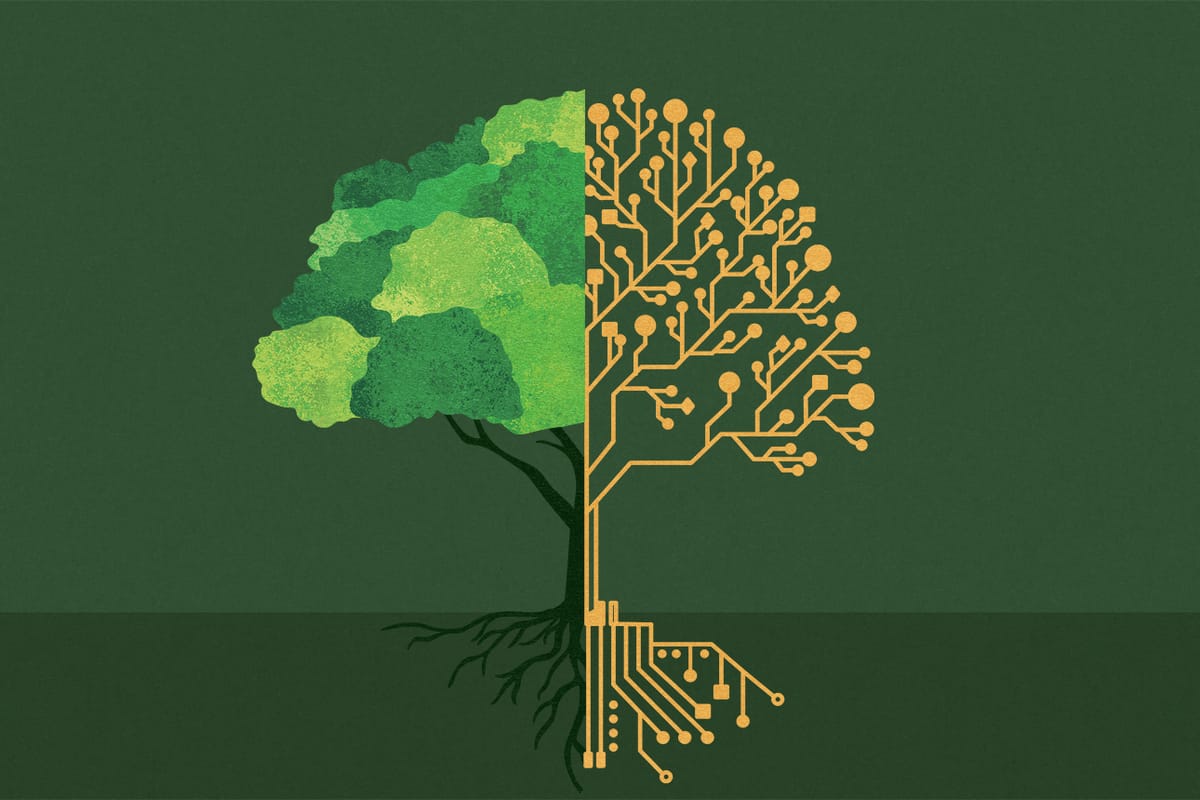Unsustainable Intelligence: Can AI Survive Itself?

The AI bubble is going to pop. It's inevitable. And the reason has nothing to do with whether the technology works or how impressive it appears. The fatal flaw lies much deeper, buried in the infrastructure that makes modern AI possible.
Here's the uncomfortable truth: AI data centres are fundamentally unsustainable.
The Resource Crisis Nobody Wants to Talk About
Let's be clear, I'm not categorically opposed to AI as a concept. The technology is impressive in many ways. But there's a difference between what's impressive and what's viable, and AI as we're currently deploying it has crossed a dangerous line.
The problem starts with the data centres themselves. These massive facilities are the beating heart of AI operations, and they're haemorrhaging resources at an alarming rate.
Electricity consumption is spiralling out of control. We're talking about power demands that rival small countries, and the projections only get worse as models scale up. Every query, every generation, every training run pulls electricity from grids that are already strained.
Water usage is equally staggering. These facilities require enormous amounts of water for cooling; millions of gallons annually per facility. In a world facing increasing water scarcity, we're literally pouring our freshwater reserves into keeping servers from overheating.
But perhaps the most overlooked crisis is the GPU bottleneck. AI, like cryptocurrency before it, devours graphics processing units. These chips wear out with incredible speed under the constant computational load, requiring replacement cycles that would have seemed absurd just a decade ago. And here's the kicker: you can't just replace them with equivalent hardware. The competitive pressure means constantly upgrading to newer, more powerful chips just to stay relevant.
The Chip Crisis: Mining Our Way to Obsolescence
This brings us to a hard limit that too many people in the industry want to ignore: chips are not an infinite resource.
Every GPU requires rare earth minerals that must be extracted from the ground. The manufacturing process is complex, expensive, and environmentally devastating. Not to mention the geopolitics around these rare earth metals and chip manufacturing (See Greenland, Ukraine, Taiwan and China). Recycling these components isn't straightforward either, it's technically challenging and often economically unviable. We're essentially treating these sophisticated pieces of technology as disposable, creating an electronic waste stream that we have no real plan for managing.
The churn rate is simply not sustainable. We cannot continue replacing GPUs at this pace indefinitely. The minerals will become harder to extract, the environmental costs will mount, and eventually, the economics will collapse under their own weight.
The Profitability Illusion
Now let's talk about the elephant in the room: AI data centres are wildly unprofitable.
In ideal scenarios and I mean ideal, everything-going-right scenarios then AI operations might generate a mild profit. Emphasis on mild. But we don't live in an ideal world. We live in a world of unexpected outages, market fluctuations, cooling failures, and constant hardware replacement cycles.
The economics simply don't work when you factor in the true operational costs. Yet somehow, the industry has convinced itself and its investors that profitability is just around the corner, always just one breakthrough away.
The House of Cards
Here's what should terrify anyone paying attention: depending on which economic analyses you examine, somewhere around 90% of recent economic growth has come from investment in AI. An investment based entirely on the assumption that AI will become a massively profitable wonder technology in the near future.
Think about that for a moment. Nine-tenths of the US economic expansion is built on a bet. A bet that we can somehow solve the resource problem, the profitability problem, and the sustainability problem all at once.
It’s like releasing the most advanced smartphone ever imagined. It's sleek, fast, has a beautiful display, amazing camera. Perfect, except the battery explodes after two minutes of use. Everything else is brilliant, but the one thing that actually powers it fails, and we keep selling it anyway, promising updates that might never fix it. Sound familiar?
The Shell Game
The only reason this house of cards hasn't collapsed yet is because the major players know exactly what's at stake. They're doing everything possible to delay the inevitable reckoning.
We're watching a shell game play out in real-time. Major tech companies are essentially trading AI services and investments back and forth among themselves, creating the appearance of a thriving, profitable ecosystem. It's the economic equivalent of two people trading the same twenty dollars back and forth while claiming they're both getting richer.
The metrics look good on paper. The growth charts point upward. The press releases are glowing. But underneath, there's nothing solid, just the frantic motion of companies trying to keep the illusion alive long enough to... what? Hope that somehow the fundamentals magically improve?
When the Music Stops
The collapse is coming. It's not a question of if, but when.
Eventually, investors will look beneath the hood. They'll see the resource drain, the profitability mirage, the unsustainable GPU consumption, and the lack of any clear path to making the economics work at scale. And when that realization hits, we'll see a market correction that makes previous tech bubbles look quaint.
We all know what happens next. We've seen this story before. When markets collapse, the wealthy don't shoulder the burden; they pass it down. Somehow, it becomes the responsibility of ordinary people to make up for the losses, to tighten our belts while the architects of the bubble walk away relatively unscathed.
The Path Forward
None of this means AI has no future. But it does mean we need to have honest conversations about sustainability, scale, and realistic applications. We need to stop pretending that current trajectories are viable and start asking harder questions about what a sustainable AI ecosystem actually looks like.
Because right now, we're building castles on sand, and the tide is coming in.
